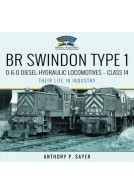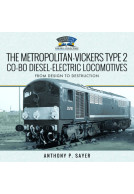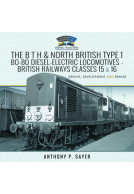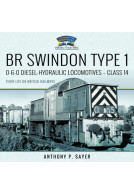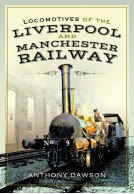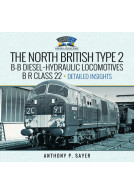The Clayton Type 1 Bo-Bo Diesel-Electric Locomotives - British Railways Class 17 (Hardback)
Development, Design and Demise
Imprint: Pen & Sword Transport
Series: Locomotive Portfolios: Diesel and Electric
Pages: 376
ISBN: 9781526762009
Published: 28th May 2021
(click here for international delivery rates)
Need a currency converter? Check XE.com for live rates
| Other formats available - Buy the Hardback and get the eBook for £1.99! | Price |
|---|---|
| The Clayton Type 1 Bo-Bo Diesel-Electric… ePub (39.6 MB) Add to Basket | £19.99 |
The ‘Claytons’ were originally conceived as the British Railways “standard” Type 1 diesel-electric locomotive, superseding other Type 1 classes delivered as part of the ‘Pilot Scheme’ fleet. The early classes suffered from poor driver visibility, and the plan from 1962 was for subsequent trip-freight and local yard shunting locomotives to be centre-cab machines with low bonnets to dramatically improve visibility.
To this extent the Claytons were highly successful and popular with operating crews. However, the largely untested high-speed, flat Paxman engines proved to be highly problematical, resulting in deliveries being curtailed after 117 locomotives. Further requirements for Type 1 locomotives after 1965 were met by reverting to one of the original ‘Pilot’ designs! Deteriorating traffic levels ultimately led to the Claytons being withdrawn from BR service by December 1971.
Considerable amounts of archive material have been unearthed to enable the issues surrounding the rise and fall of the ‘Standard Type 1’ locomotives to be fully explored. Further sources provide insights into the effort and money expended on the Claytons in a desperate attempt to improve their reliability. Individual locomotive record cards, together with personal sighting information, allow histories of each class member to be developed including allocations, works visits, liveries and disposal details.
Supported by over 280 photographs and diagrams, dramatic new insights into this troubled class have been assembled for both historians and modellers alike.
Although expensive, excellent value for money and a must-have for anyone who wants to know the history of the Claytons. Highly recommended.
Rail Advert
4.9 out of 5
Read full review here
"This book is an important reference work."
Rail Express Magazine - November 2021
Book review featured in
Railways Illustrated
This 376 page work is without doubt the most comprehensive account to date of the class 17s, and is illustrated by a huge selection of monochrome and colour images which provide a record of the daily lives of this class and the disposal of the fleet, only one of which survives in preservation. A highly recommended book.
West Somerset Railway Association
This book is an excellent account, not just of this particular class, but of the way in which policy decisions involving the expenditure of millions of pounds were reached by BR in the early Modernisation Era period.
Industrial Railway Society Bulletin 1071, July 2021
Another in the author's series of in depth studies looks at the much maligned class 17s. Once again the author goes into detail about the history of each member of the class as well as a detailed account of the process of design, procurement and delivery and their service lives and demise. The author has again carried out extensive research going back to source material where possible and evaluating the class from the available reports, minutes of meetings and other information available in archives and records. The book has been designed to “compliment and develop” a previously published book on the subject by John Hooper (Book Law Publications, 2016). As such there is a lot of new information featured, but detailed listings for each class member have had to be restricted to allocation history. The usual livery, detail differences and operations, etc are featured as seperate chapters. A very good detailed reference book on a rather unreliable class of locomotive. Recommended.
Diesel and Electric Modellers United
A good book about a lesser-known class which calls into question the way British Rail commissioned early diesels. Recommended for diesel enthusiasts.
Roger Backhouse, York Model Engineers - Newsletter, July 2021
About Anthony Sayer
ANTHONY SAYER is a life-long railway enthusiast with an interest in the history of the early British diesel and electric locomotive classes. This is the author’s sixth book in the “Locomotive Portfolio” series, following on from the North British Type 2 (Classes 21 & 29), the Metropolitan-Vickers Type 2 (Class 28), the Clayton Type 1 (Class 17), the BTH/NBL Type 1 (Classes 15 & 16) and BR Swindon Type 1 (Class 14: Their Life on British Railways) books published between 2019 and 2021. Anthony lives in the north-east of England and has now retired after 37 years in the steel industry with responsibilities in both transport planning and supply-chain logistics.








